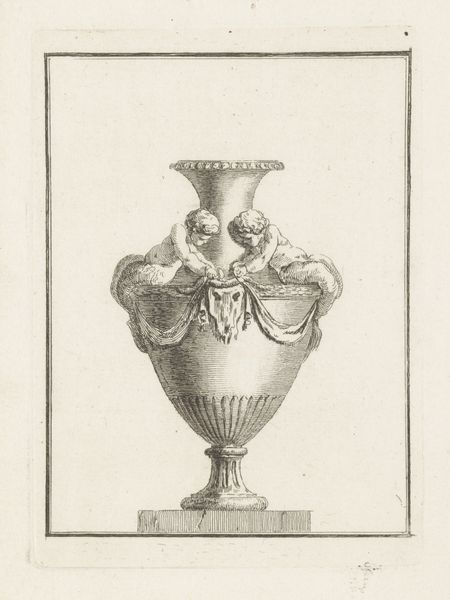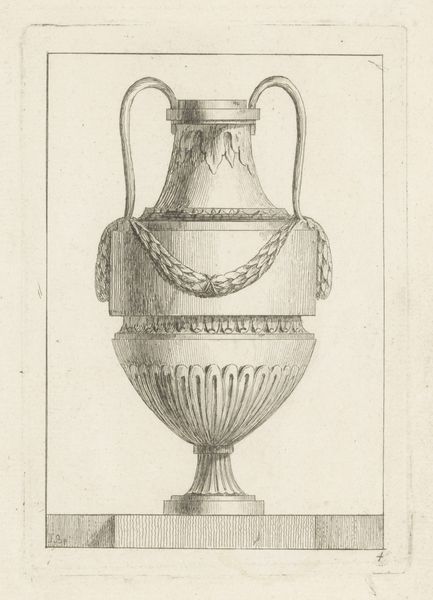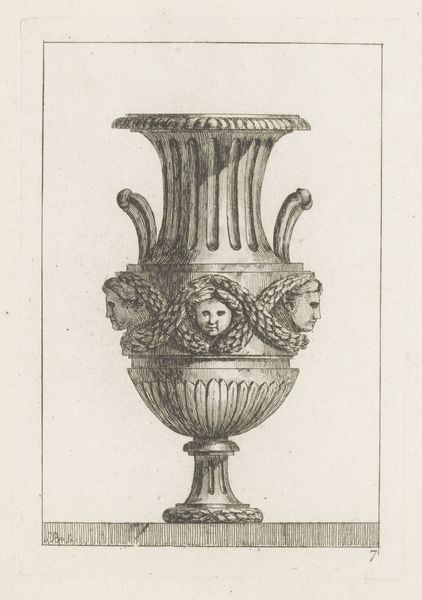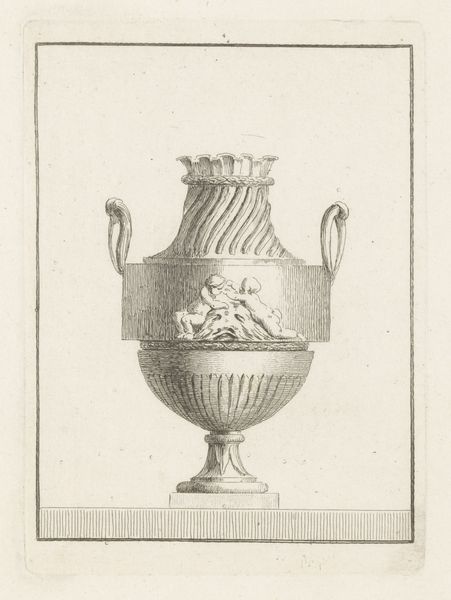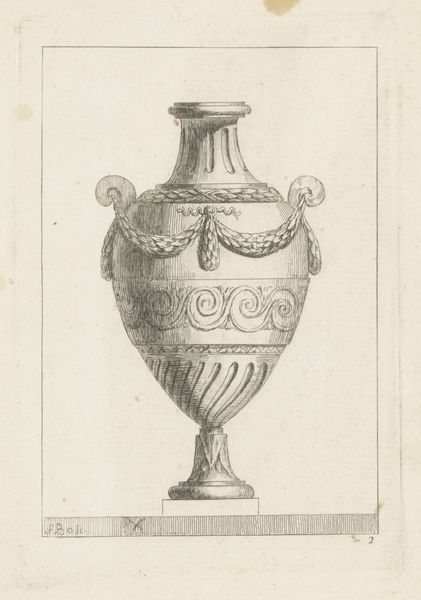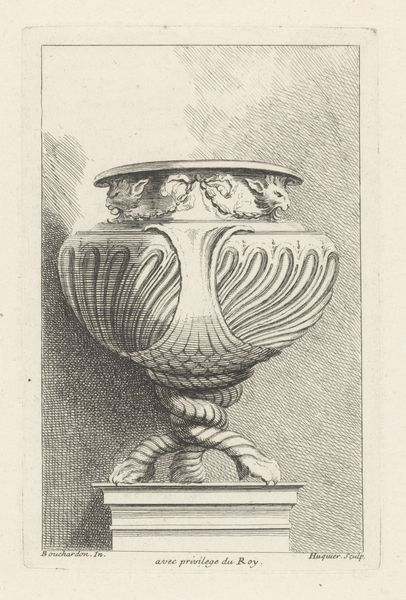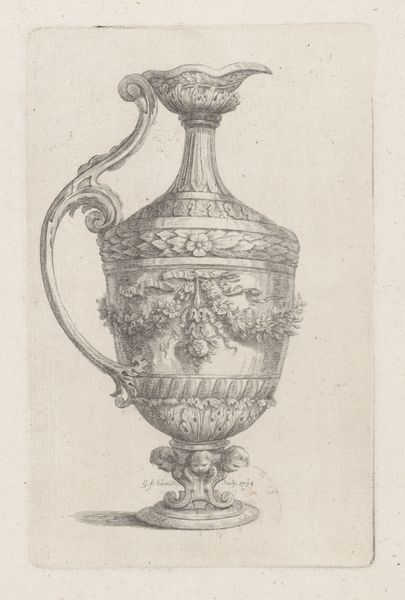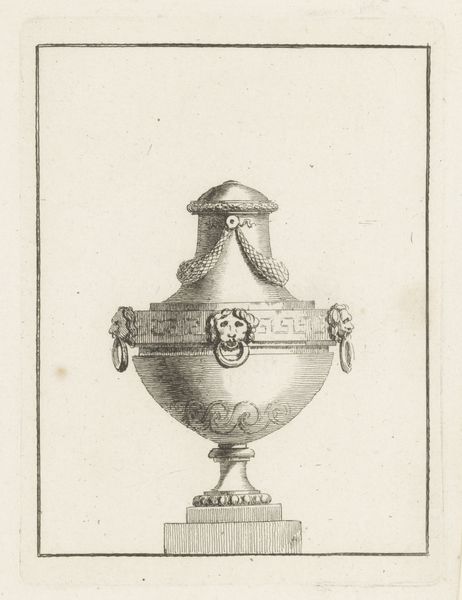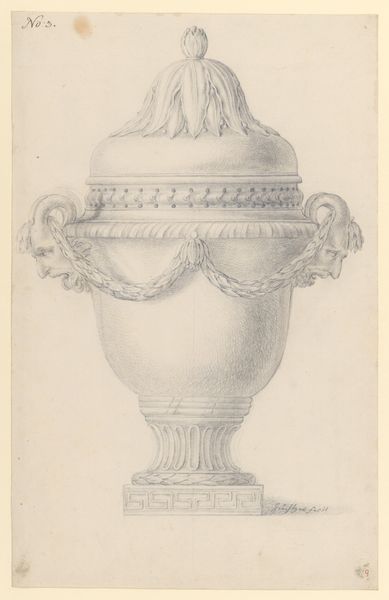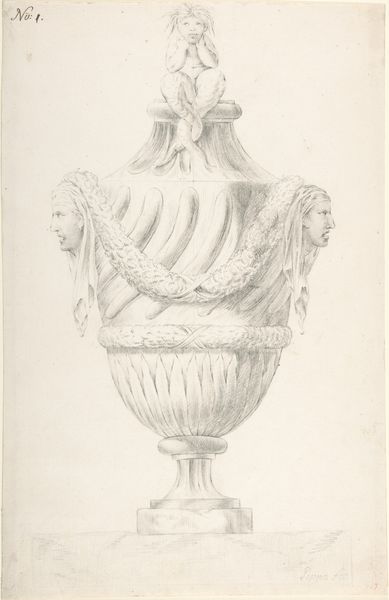
Dimensions: height 172 mm, width 118 mm
Copyright: Rijks Museum: Open Domain
Curator: Our attention is drawn to "Vaas met guirlandes," or "Vase with Garlands," an engraving created between 1755 and 1782. Editor: The first thing I notice is the stark contrast and very precise lines giving a cold formality despite the baroque style. It's intricate, but the absence of shading seems to flatten the dimension. Curator: Absolutely, the linear quality emphasizes the structure. Observe the tripartite composition. There’s the fluted, seemingly swirled top, then a cylindrical midsection with handles and finally the rounded, leafy base resting on its plinth. The garlands provide horizontal interruption. Semiotically, one can interpret this through structural relations within baroque ornament, suggesting a status symbol represented through rigid geometric components. Editor: True, but to consider the history; printed engravings of vases like these functioned as a tool for architects, furniture makers, and artisans to promote new trends through pattern books and print series. What did ornament come to represent during the rise of merchant society in the 18th century? This speaks to luxury markets and elite visual culture when these details could only be manifested for wealthy private clients in interior decor and personal display. Curator: Intriguing thought. If one follows a different perspective, the formal repetition of shapes and lines is harmonious to the eye, yet the lack of dynamic composition keeps it in a rigid structure, which perhaps hints at its utilitarian purpose to illustrate a type of form rather than the art object itself. It’s a showcase of form divorced from emotional expression. Editor: I would argue it showcases more than the type of form: it displays evolving tastes. The market economy, consumerism, and developing trends meant prints like these allowed new imagery to proliferate outside of elite collections for a wider patronage of ideas, thus setting a stage for emerging cultural changes. Curator: Your point is insightful, how a functional object gains meaning within evolving cultural settings. Editor: Indeed. Together we appreciate how structure and historical context enable nuanced understanding of objects.
Comments
No comments
Be the first to comment and join the conversation on the ultimate creative platform.
